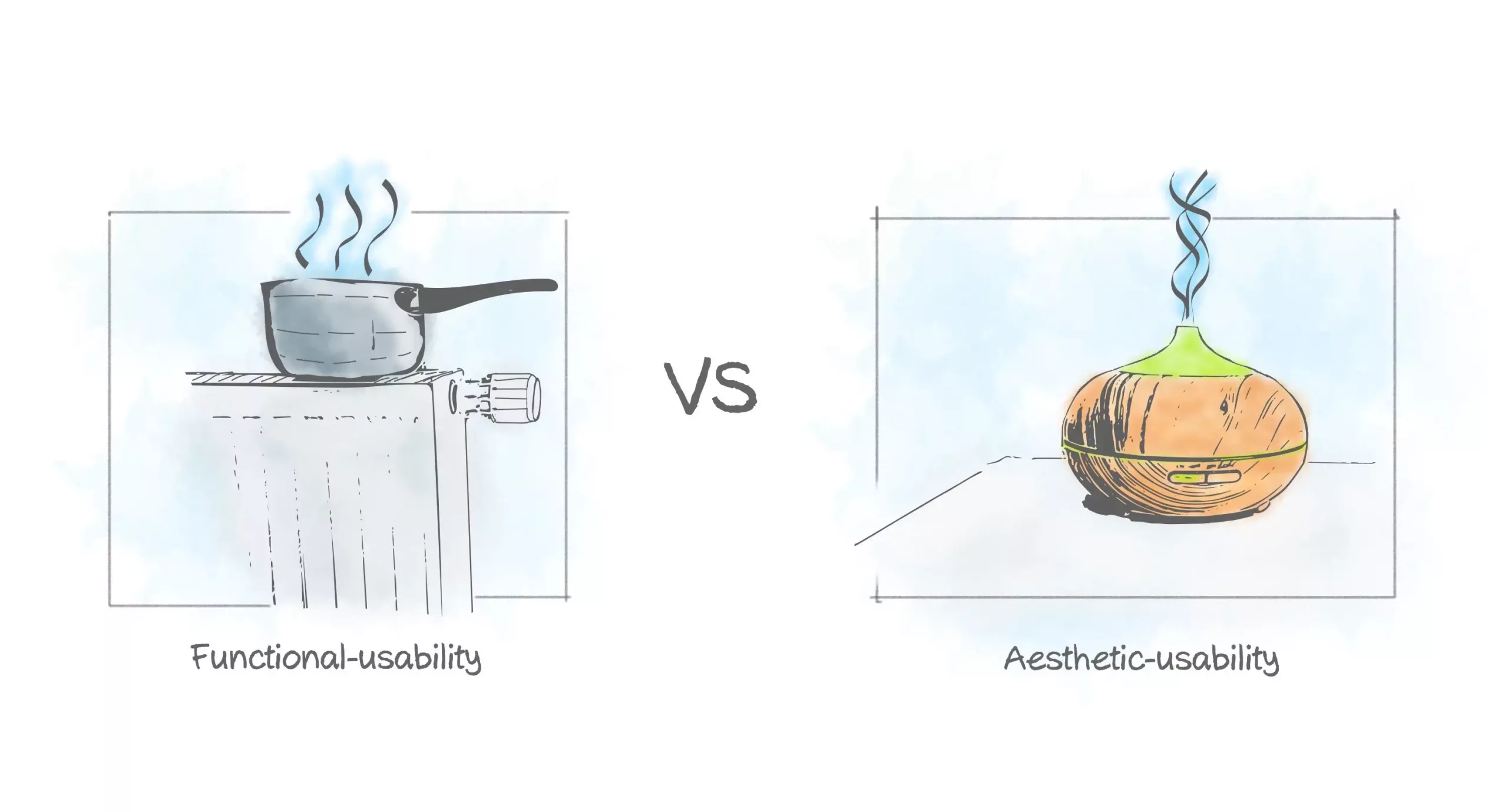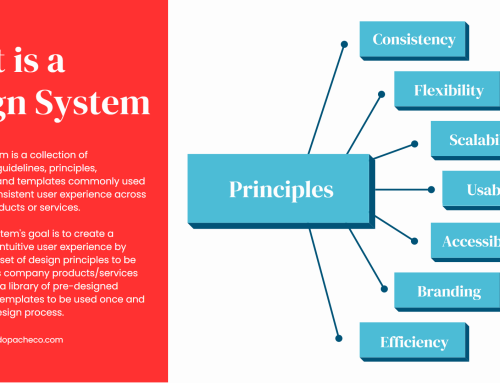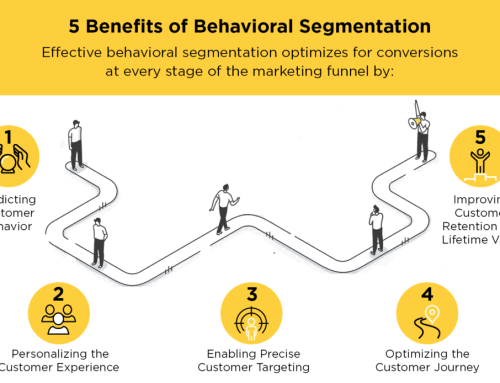Aesthetic Usability is the idea that a product or design should be both aesthetically pleasing and easy to use.
This concept is based on the idea that an aesthetically pleasing product, can enhance the user experience and make the product more enjoyable to use.
- The aesthetic aspect of a product refers to its visual appearance, including factors such as color, shape, and overall design. An aesthetically pleasing product is visually appealing and creates a positive emotional response in the user.
- The usability aspect of a product refers to how easy it is to use. A product that is easy to use is intuitive and straightforward, allowing the user to accomplish their desired tasks quickly and efficiently.
A combination of aesthetics and usability in a single product creates a positive user experience (UX). When a product is both aesthetically pleasing and easy to use, it can help the end users to engage and make them more likely to continue using it.
There are several ways in which aesthetic usability, could be achieved in product design.
- One way is to focus on simplicity and clarity in the design. What this means is creating a design that is uncluttered and easy to understand, with clear labels and instructions for the end user.
- Another way to achieve aesthetic usability is to use colors and visual elements in a way that enhances the user experience. For example, using contrasting colors can help to draw the user’s attention to important information, and using visual cues can help to guide the user through the product.
- Additionally, incorporating tactile elements into the design can also contribute to aesthetic usability. For example, a product with a smooth, ergonomic design can be more comfortable and enjoyable to use.
Overall, achieving aesthetic usability in a product design requires a balance between aesthetic and usability considerations.
The design should be visually appealing and create a positive emotional response in the user, while also being easy to use and efficient.
By focusing on both aesthetics and usability, designers can create products that enhance the user experience and make them more enjoyable to use.
Benefits of Aesthetic-Usability
There are several benefits to considering aesthetic usability in UX design:
- Improved user experience: Aesthetically pleasing designs can improve the overall user experience by making products more appealing to use and easier on the end user’s eyes. This can help to increase user satisfaction and engagement with the product, including improvements in conversion rates.
- Increased motivation to use the product: An aesthetically pleasing design can make users more motivated to use the product and can help to reduce the perceived effort required to use it. This can be especially useful for products that users may not initially be interested in using.
- Enhanced credibility: A well-designed product can convey credibility and professionalism to users, which can help to increase user trust and confidence in the product.
- Increased user loyalty: A good aesthetic-usability design can help to create an emotional connection with users and can lead to increased loyalty and repeat usage.
- Reduced cognitive load: Aesthetically pleasing designs can help to reduce cognitive load by minimizing the amount of mental effort required to use the product. This can make the product easier and more enjoyable to use, which can lead to increased satisfaction and engagement.
- Improved marketing and branding: A well-designed product can help to improve marketing and branding efforts by creating a positive image for the company and its products. This can lead to increased brand awareness and customer loyalty.
It is essential to note that while aesthetic usability is an important aspect of UX design, it is not the only one that should be considered.
Other factors such as functionality, usability, and accessibility also play a significant role in the overall user experience (UX) of a product.
Examples of Aesthetic-Usability
- Website layout and design: The layout and visual design of a website have a significant impact on its aesthetic appeal and usability. For example, a website with a clean, well-organized layout that uses consistent typography and color schemes can be more aesthetically pleasing and easier to navigate than a cluttered, poorly designed website.
- Mobile app design: The visual design of a mobile app can also have a significant impact on its aesthetic appeal and usability. For example, an app with a visually appealing layout, consistent use of color and typography, and intuitive navigation can be more appealing and easier to use than an app with a cluttered or poorly designed interface.
- Product packaging: The design of product packaging can also impact its aesthetic appeal and usability. For example, packaging that is visually appealing, clearly labeled, and easy to open can be more appealing to consumers and more convenient to use than packaging that is poorly designed or difficult to open.
- User interface design: The design of a user interface (UI) can also play a role in aesthetic usability. A well-designed UI that uses consistent design elements and, at the same time, enables intuitive navigation can be more aesthetically pleasing and easier to use than a poorly designed UI.
- Vehicle design: The design of a vehicle can also impact its aesthetic appeal and usability. For example, a vehicle with a sleek, visually appealing design and intuitive controls can be more appealing to consumers and easier to use than a poorly designed vehicle.
- Appliance design: The design of appliances can also have an impact on aesthetic usability. For example, an appliance with a sleek, modern design and intuitive controls can be more appealing to consumers and easier to use than an appliance with a dated or poorly designed interface.
Common mistakes of Aesthetic-Usability
- Ignoring usability: One common mistake in aesthetic-usability design is focusing too much on aesthetics at the expense of usability. While aesthetics are important, they should not come at the expense of functionality. Ignoring usability can result in a product that looks good but is difficult or frustrating to use, which can lead to decreased user satisfaction and engagement.
- Overloading the design with unnecessary elements: Another common mistake is adding too many design elements or features that are not necessary for the product’s functionality. This can make the product cluttered and confusing to use, which can negatively impact usability.
- Using low-quality or inappropriate images: Using low-quality or inappropriate images can also impact aesthetic usability. Low-quality images can make the product look unprofessional and can distract from the overall design, while inappropriate images can be off-putting to users.
- Ignoring accessibility: Another common mistake is ignoring accessibility in the design process. Accessibility refers to the design of products, devices, services, or environments for people with disabilities. Ignoring accessibility can result in products that are difficult or impossible for certain users to access and use, which can negatively impact usability for those users.
Designers need to consider all of these factors to create a product that is both aesthetically pleasing and highly usable.
If you’re interested in continue reading about this topic, you should read “Design principle: Aesthetics“






Leave A Comment